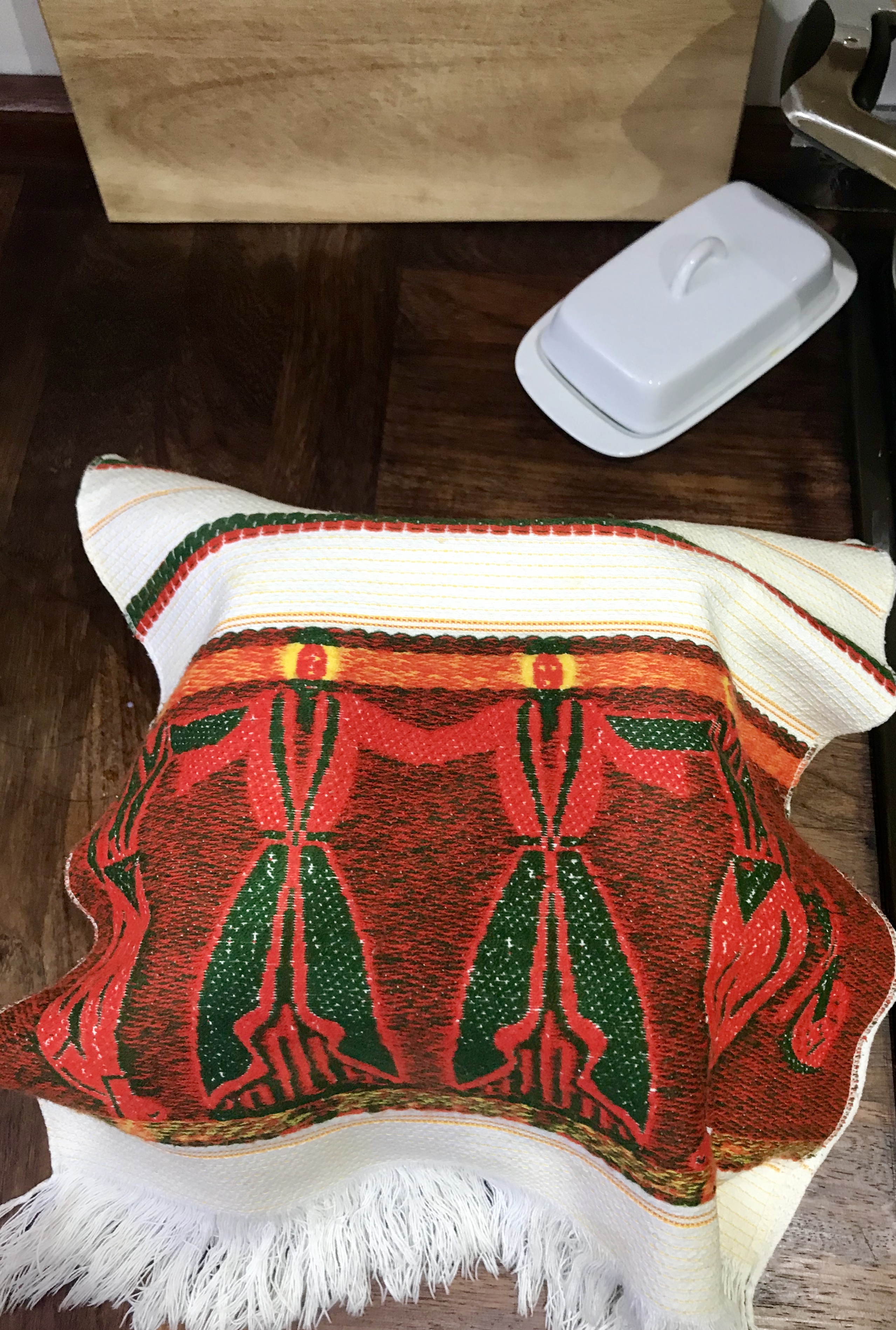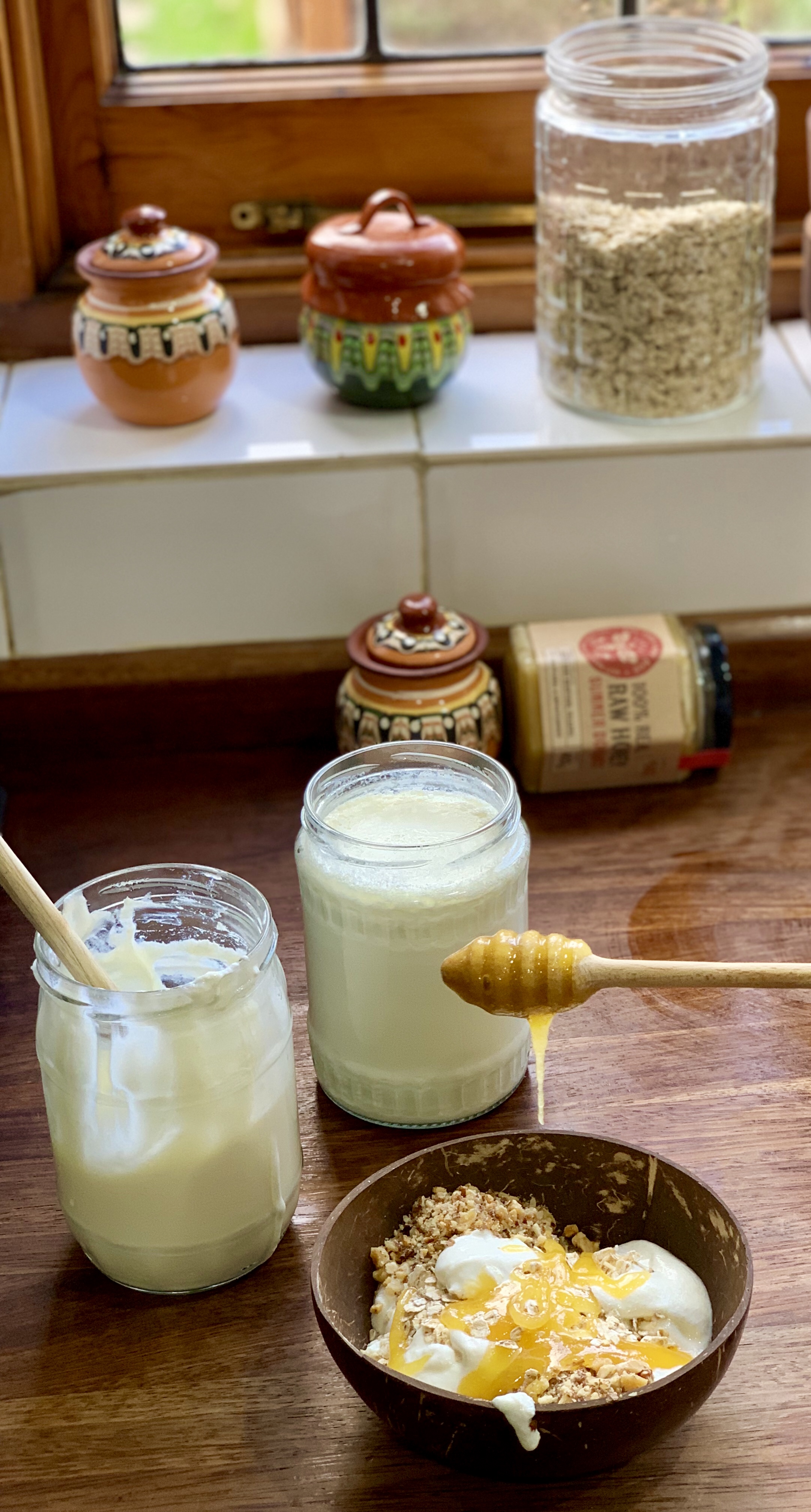
Bulgarian yoghurt is unique as it is the only one of its sort that contains these two types of good gut bacteria: Lactobacillus Bulgaricus and Streptococcus Thermuphilus.
Lactobacillus Bulgaricus was first discovered by the Bulgarian scientist Dr Stamen Grigorov in 1905. This bacteria strain originates and multiplies in Bulgaria only, as the country seems to be the only environment in which it can maintain its unique qualities through future generations. The bacteria is exported and can exist in other countries too, however its qualities diminish overtime, when living outside its own ambience.
Bulgarian yoghurt is a great addition to a healthy and sustainable diet. We love it with porridge oats, some crushed walnuts, and (of course) honey, for breakfast or a healthy afternoon snack.
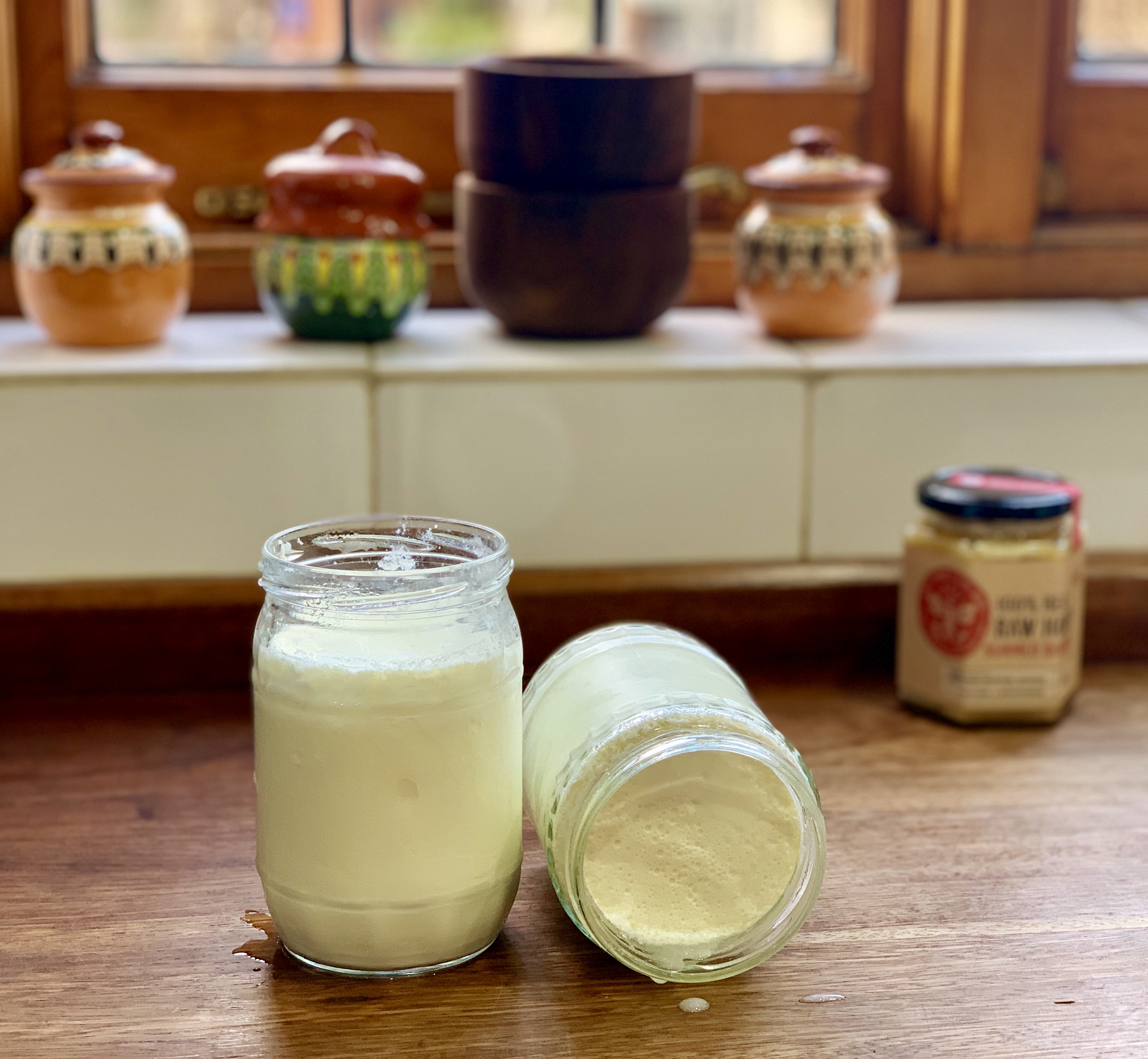
INGREDIENTS
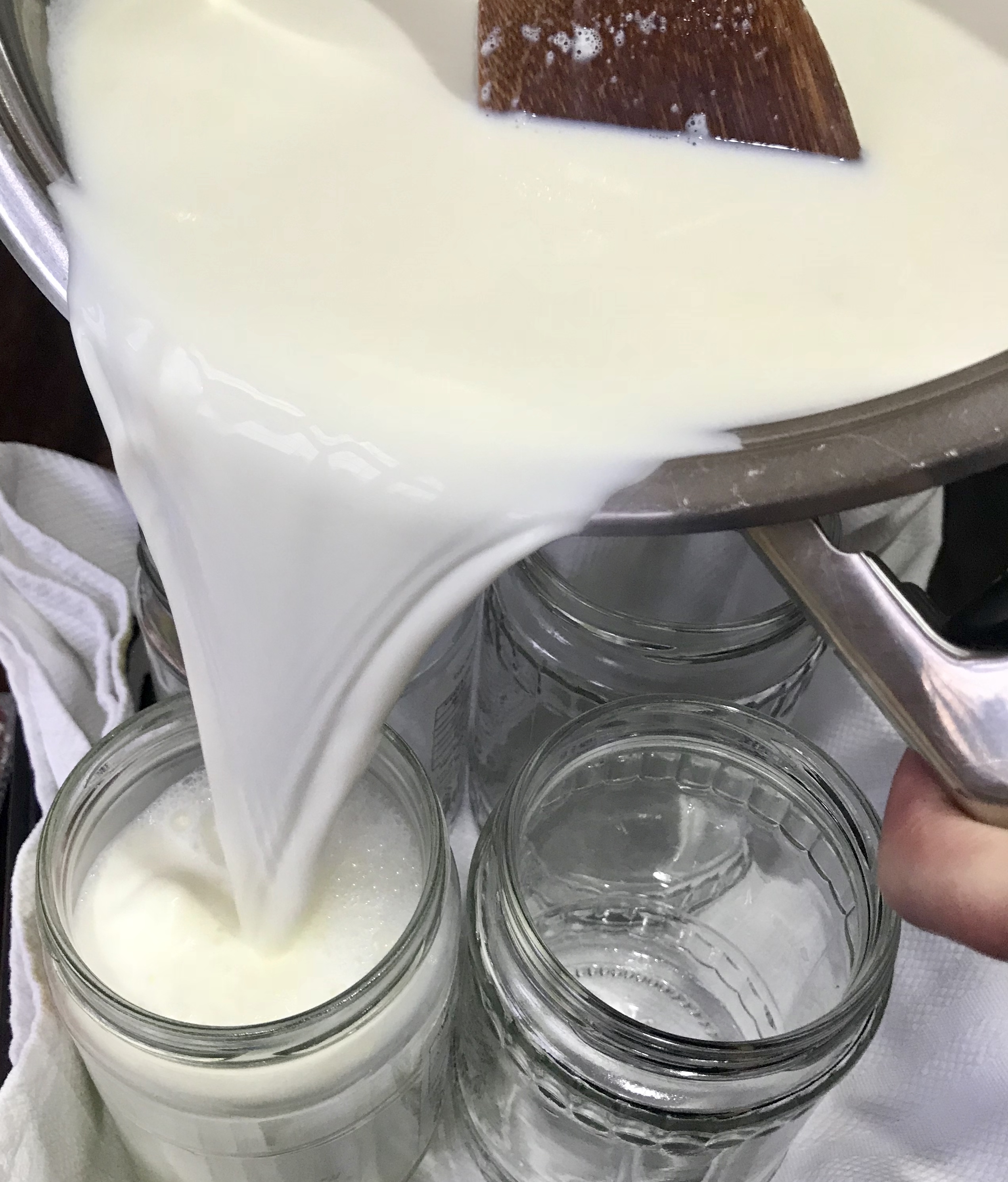
4. Separately, stir the yoghurt that you are using for the starter cultures
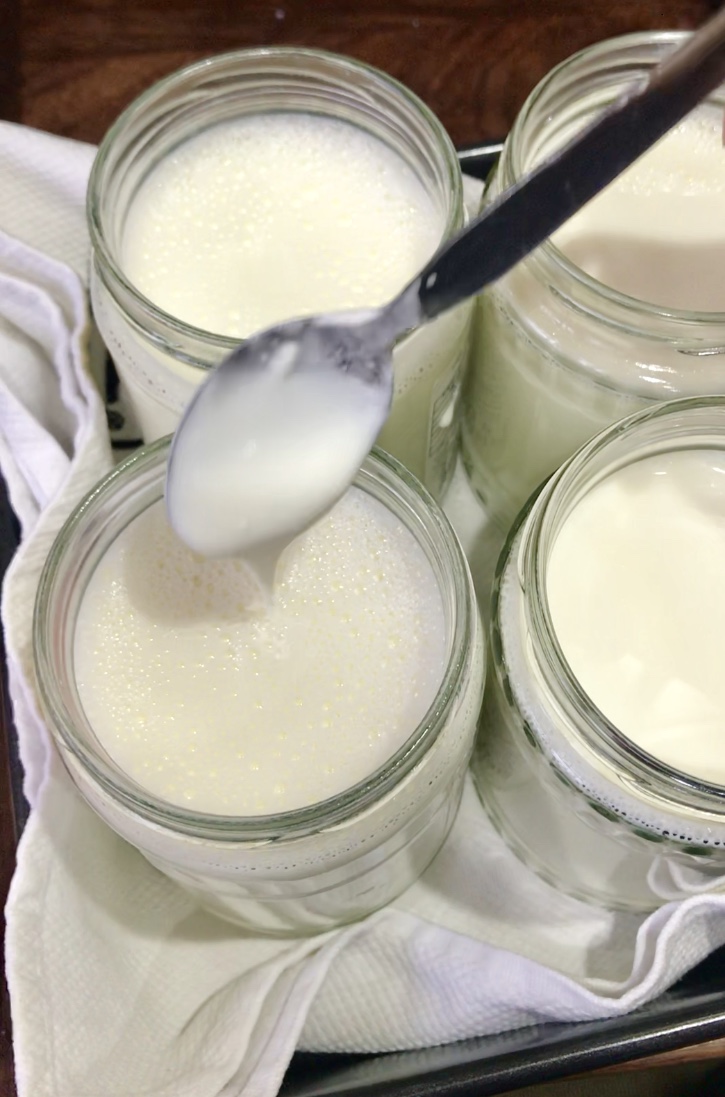
6. Put kitchen towel on each jar (to absorb the moisture) before screwing the jar lids
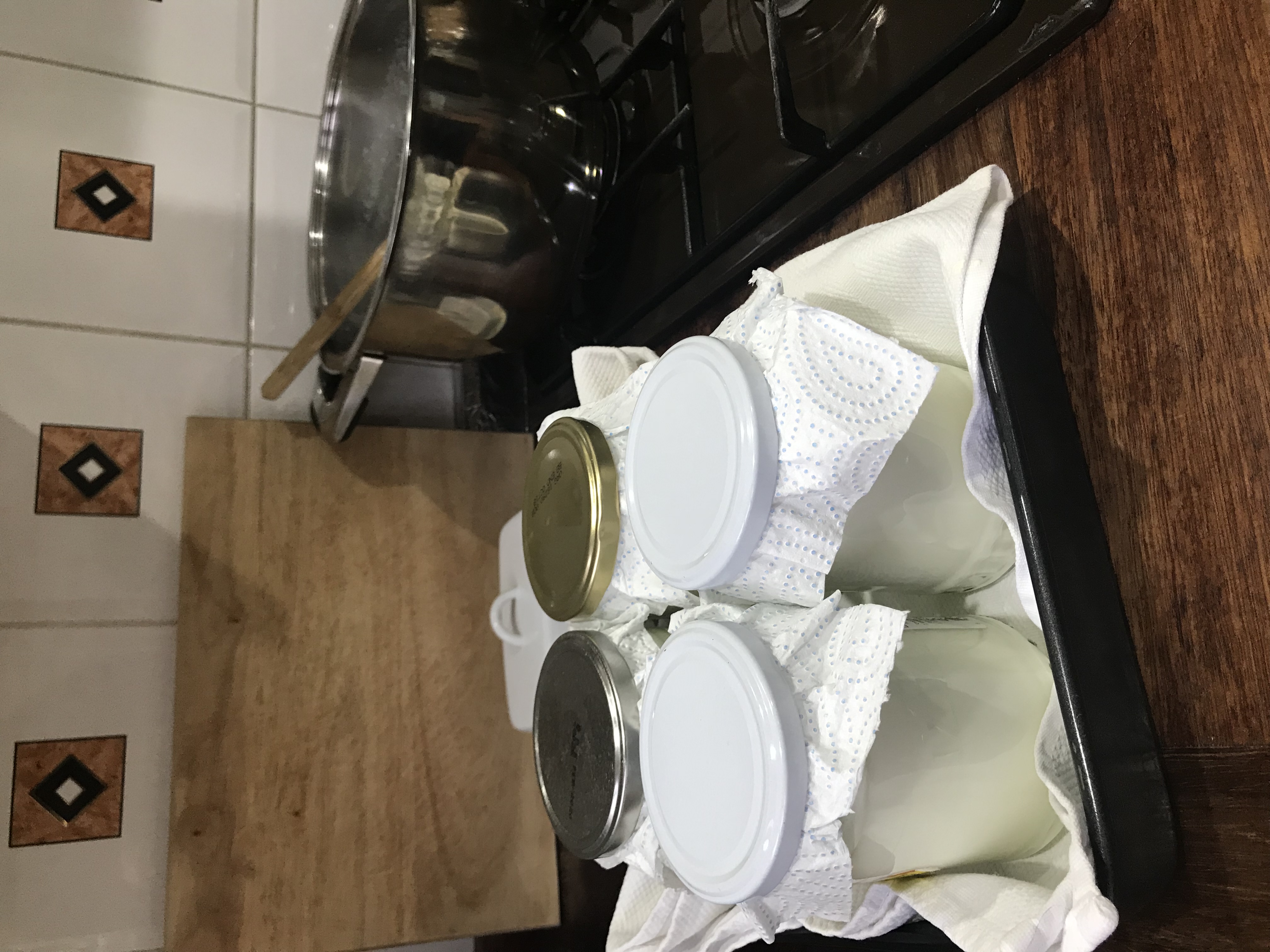
7.Wrap up the jars warm with a tea towel or a blanket and leave aside for 6 hours
